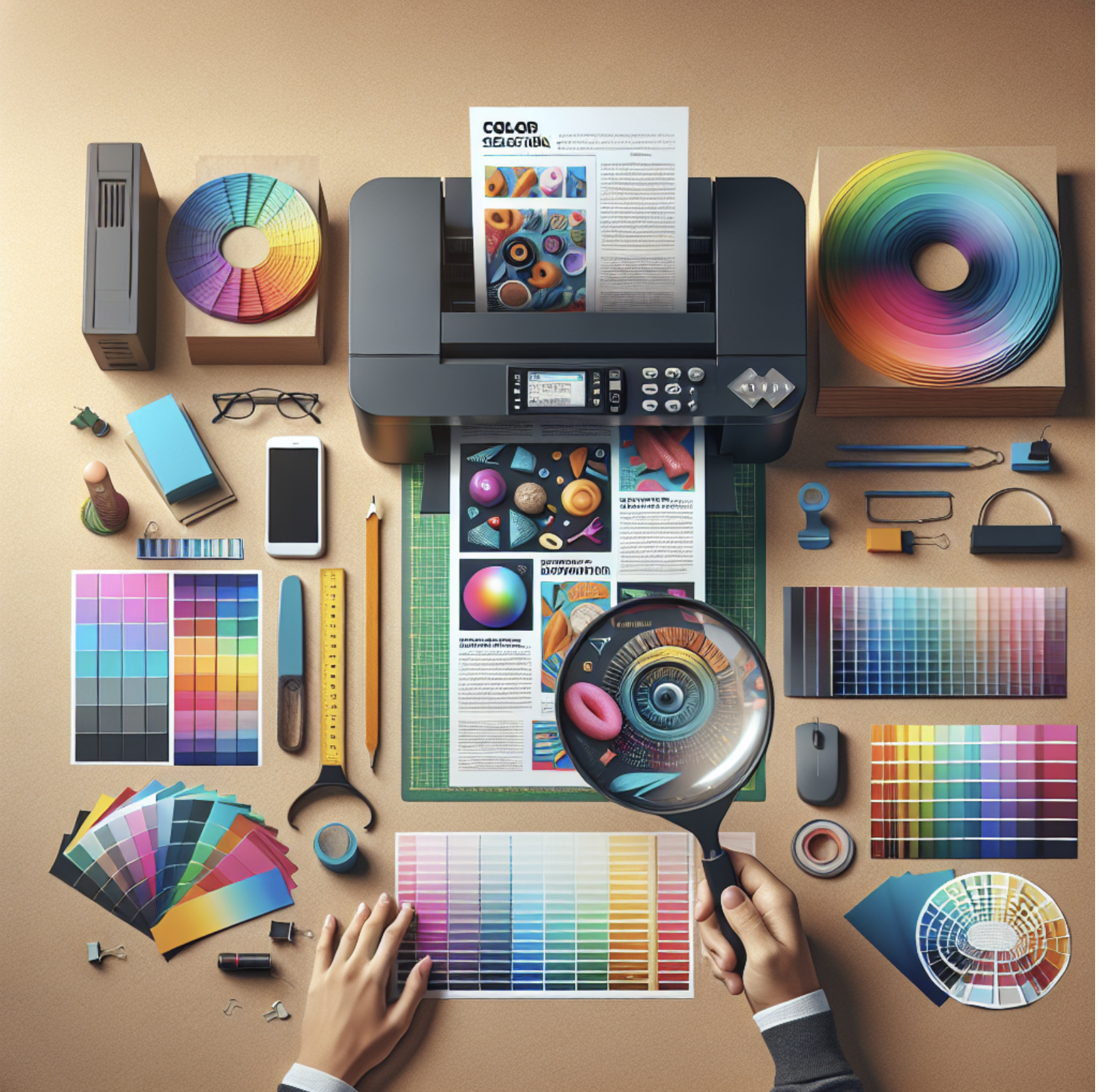
Understanding the Purpose of Your Marketing Flyer
Before diving into the design and printing process, it’s crucial to define the purpose of your marketing flyer. Is it meant to promote an upcoming event, advertise a new product, or build general brand awareness? The goal of your flyer will shape every decision you make, from the design elements to the type of paper you choose. For instance, a flyer advertising a luxury product might require a sleek, high-end design with premium paper stock, while a flyer for a community event might focus on bold, attention-grabbing visuals and cost-effective printing.
Understanding your target audience is equally important. A flyer aimed at young professionals might feature modern, minimalist designs, while one targeting families could use vibrant colors and playful imagery. By clearly defining the flyer’s purpose and audience, you can ensure that every design and printing choice aligns with your marketing objectives, ultimately increasing the flyer’s effectiveness.
Choosing the Right Paper Stock
The type of paper you choose for your flyer can significantly impact its overall look and feel. Paper stock comes in various finishes, weights, and textures, each suited to different purposes. Glossy paper, for example, is ideal for vibrant, photo-heavy designs as it enhances color saturation and gives a polished finish. Matte paper, on the other hand, offers a more subdued, professional look, making it a great choice for text-heavy flyers or those with a minimalist design.
Cardstock is another popular option, especially for premium flyers. Its thicker, sturdier feel conveys quality and durability, making it perfect for high-end promotions or long-term use. When selecting paper stock, consider the flyer’s purpose and the impression you want to leave on your audience. For instance, a flyer for a luxury spa might benefit from a soft-touch matte finish, while a flyer for a music festival could use a glossy finish to make the colors pop.
Additionally, think about practicality. If your flyer will be distributed outdoors or in high-traffic areas, a more durable paper stock might be necessary to withstand wear and tear. Balancing aesthetics with functionality is key to creating a flyer that not only looks great but also serves its purpose effectively.
Designing for Print: Key Considerations
Resolution and Image Quality
One of the most common mistakes in flyer design is using low-resolution images, which can result in pixelation and a lackluster final product. For high-quality printing, ensure that all images and graphics are at least 300 DPI (dots per inch). This resolution ensures sharp, clear visuals that maintain their quality when printed. Avoid using images downloaded from the web, as they are often optimized for screen resolution (72 DPI) and will appear blurry in print.
Color Modes: RGB vs. CMYK
Understanding color modes is essential for achieving accurate colors in your printed flyer. Digital screens use the RGB (Red, Green, Blue) color mode, while printers use CMYK (Cyan, Magenta, Yellow, Black). If your design is created in RGB, the colors may look different when printed. Always convert your design to CMYK before sending it to the printer to ensure color consistency. Many design software programs, like Adobe Photoshop and Illustrator, allow you to switch between color modes easily.
Bleed and Margins
Bleed and margins are critical for achieving a professional, edge-to-edge print. Bleed refers to the area of the design that extends beyond the trim line, ensuring that no unprinted edges appear after cutting. Typically, a bleed of 0.125 inches is recommended. Margins, on the other hand, are the safe zones within the design where important text and elements should be placed to avoid being cut off. Keeping these technical aspects in mind will help you create a polished, print-ready design.
Optimizing Text and Fonts for Readability
The text on your flyer should be easy to read and visually appealing. Choose font styles that align with your brand’s identity while maintaining readability. For example, sans-serif fonts like Arial or Helvetica are clean and modern, making them ideal for headlines. Serif fonts, such as Times New Roman, convey a more traditional and formal tone, suitable for professional or academic flyers.
Font size is another crucial factor. Headlines should be large enough to grab attention, while body text should be legible from a reasonable distance. A good rule of thumb is to use at least 10-12 points for body text and 18-24 points for headlines. Additionally, avoid overcrowding your flyer with text. Leave ample white space to create a clean, balanced design that guides the reader’s eye naturally.
Incorporating Eye-Catching Visuals
Visuals are the cornerstone of an effective marketing flyer. High-quality images, illustrations, and icons can instantly grab attention and convey your message more effectively than text alone. When selecting visuals, ensure they align with your brand’s identity and the flyer’s purpose. For instance, a flyer for a tech company might feature sleek, futuristic graphics, while one for a children’s event could use playful, colorful illustrations.
Consistency is key. Use a cohesive color palette and style for all visuals to create a unified look. Additionally, consider the placement of visuals within the design. Strategic placement can guide the reader’s eye to key information, such as a call-to-action or event details.
Selecting the Right Printing Method
Digital Printing vs. Offset Printing
Choosing the right printing method depends on your budget, timeline, and the quantity of flyers needed. Digital printing is cost-effective for small to medium print runs and offers quick turnaround times. It’s ideal for businesses that need flexibility or want to test different designs before committing to a larger order.
Offset printing, on the other hand, is better suited for large print runs. While it has a higher upfront cost, the per-unit cost decreases significantly with volume. Offset printing also offers superior color accuracy and the ability to use specialty inks, making it a great choice for high-quality, large-scale projects.
When to Use Specialty Printing Techniques
For premium-quality flyers, consider specialty printing techniques like embossing, foil stamping, or spot UV. These methods add a tactile and visual element that can make your flyer stand out. For example, foil stamping can add a metallic sheen to logos or headlines, while spot UV can create a glossy contrast on specific design elements. These techniques are particularly effective for luxury brands or special events where making a strong impression is essential.
Proofing Before Printing
Proofing is a critical step that should never be overlooked. Even minor errors can undermine the professionalism of your flyer. Carefully review the design for typos, alignment issues, and color inconsistencies. Print a test copy to check how the colors and layout appear in real life. Use a checklist to ensure all elements, from text to visuals, are in place and error-free. Taking the time to proof your flyer can save you from costly reprints and ensure a flawless final product.
Eco-Friendly Printing Options
Sustainability is becoming increasingly important to consumers, and choosing eco-friendly printing options can enhance your brand’s reputation. Consider using recycled paper or soy-based inks, which are less harmful to the environment. Many printing services now offer carbon-neutral options, allowing you to offset the environmental impact of your print run. Highlighting your commitment to sustainability on the flyer itself can also resonate with environmentally conscious audiences.
Working with a Professional Printer
Partnering with a professional printer can make a significant difference in the quality of your marketing flyers. Look for a printer with experience in producing high-quality materials and ask for samples of their work. A professional printer can also provide valuable advice on paper stock, finishes, and printing techniques, ensuring your flyer meets your expectations. For complex or large-scale projects, their expertise can be invaluable.
Measuring the Success of Your Marketing Flyers
Once your flyers are distributed, it’s important to measure their effectiveness. Use tools like QR codes, custom URLs, or promo codes to track engagement and conversions. For example, a QR code can direct users to a landing page, allowing you to monitor how many people interacted with your flyer. Analyzing these metrics can provide insights into what worked and what didn’t, helping you refine your strategy for future campaigns.


